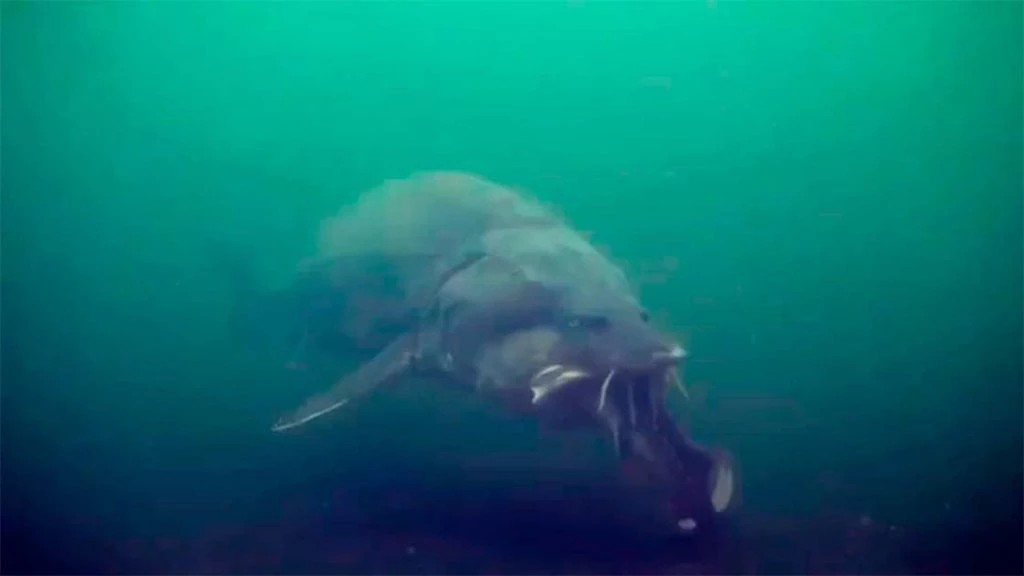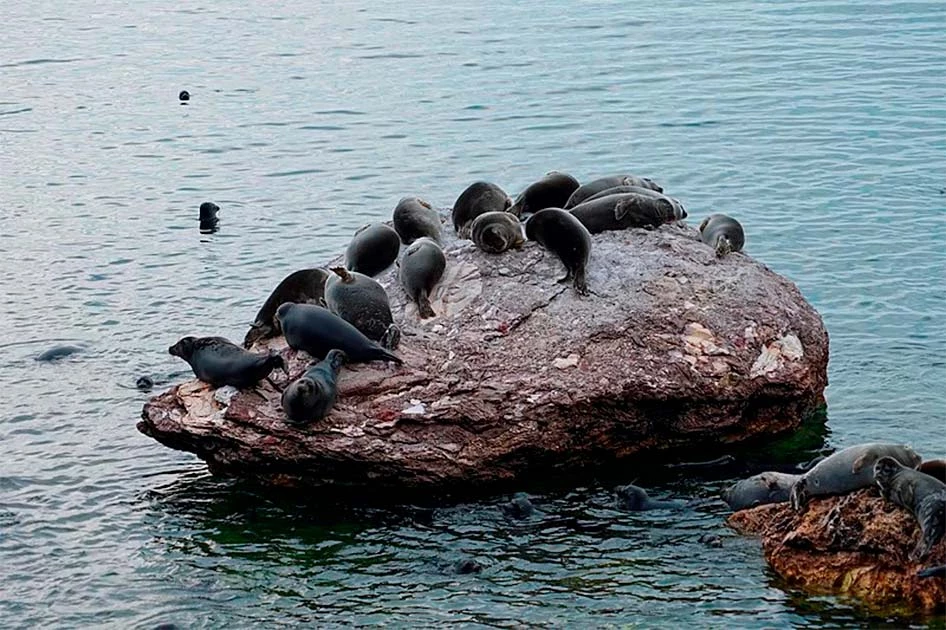Stories about Aliens from Roswell, Mothman, or sightings of the Jersey Devil are some of the many strange events that have occurred in the United States. The US isn’t the only country with its share of weird cryptids and alien reports. Russia, home of the Chuchunya (Yeti), strange lights in the sky, and crashed UFOs, is one country you don’t often associate with these sorts of reports.
One part of Russia that has had UFOs or extraterrestrial sightings for centuries is Siberia. Siberia’s Lake Baikal is full of rare species of animals, plants, and potentially underwater aliens.
The Lake Baikal Swimmers once terrified Russian Navy divers, and their strength left three divers dead from the bends. What is so unique about Lake Baikal, and is it home to the otherworldly Lake Baikal Swimmers?
Lake Baikal
Lake Baikal (Oзеро Байкал) is the world’s largest freshwater lake located in Siberia, Russia. Lake Baikal is located between Irkutsk Oblast and the Republic of Buryatia in Southern Siberia.
Along with being the largest freshwater lake in the world, it is the deepest and oldest lake as well. The maximum depth of Lake Baikal is 898 fathoms (1,642 meters, 5,387 feet), and the lake has been dated to be 25-30 million years old.
Lake Baikal is often called the “Galapagos of Russia,” and for a good reason. Thousands of species of animals and plants can only be found in Lake Baikal or the surrounding area.

One of the most beloved animals in Lake Baikal is the Baikal seal, known as the “nerpa” seal in Russia. The nerpa seal is a species of earless seal only found in Baikal. They are the smallest seal species and the only exclusively freshwater seals in the world.
What makes the nerpa seal even more enchanting is that nobody knows how the seals ended up living in Lake Baikal. But the chubby seals aren’t the only mysterious creatures in this Siberian lake.
Due to its extreme depths, many of the species of fish in Lake Baikal have adapted to survive in deep water. While angler fish and other species that use bioluminescence to attract prey are not found in Lake Baikal, there are many strange-looking fish with translucent bodies or large yellow alien-like eyes.
There is the oilfish, also known as golomyanka, which has a light pink/pearl-colored body with transparent, delicate fins. The oilfish does not have any scales, and its body is primarily made of fat. They have a large mouth that can open 1.5 times wider than their body.
The fish species that call Lake Baikal their home often grow to enormous sizes due to the lake’s high levels of dissolved oxygen, which can cause gigantism. One fish that has been known to grow several feet in length and weigh several thousands of pounds is the sturgeon.
Beluga sturgeon, which produces the much coveted and incredibly delicious beluga caviar, have been caught in Russia and can live between 50 and 60 years, continuously growing in size. Lake Baikal has its own unique species of sturgeon, which may have been the source behind the lake’s version of the Loch Ness Monster.

Known as the “Lusud-Khan,” which translates to “Water Dragon Master,” this creature is described as a giant sturgeon with an almost gator-like snout and armored body. But these aren’t the only strange sightings in Lake Baikal.
The Lake Baikal Swimmers
The Lake Baikal Swimmers are a strange kind of underwater humanoid creatures that Russian navy divers encountered in the lake in 1982. During a regular military dive exercise and working at a depth of 50 meters (164 feet), the divers noticed something strange in the water with them.
The divers reported sightings of humanoid-shaped creatures that had bodies that stretched out 3 meters (9ft) in length. The size of these creatures wasn’t the only clue that what the divers encountered was not of this world.
The figures were described as having silver silhouettes, and some had transparent spheres on their heads. These spheres have also been described as looking like an open umbrella being held over the creatures’ heads.
Once the divers surfaced, they reported the sighting to a commander who ordered them, men, back into the freezing cold Lake Baikal and told them to catch one of these strange swimmers. Seven divers reentered the water and again encountered what is now known as the Lake Baikal Swimmers, which forcefully threw the soviet divers to the lake’s surface.
There were not enough decompression chambers on the shore for all seven of the divers, and three unlucky divers were left to die from the caisson disease, aka decompression sickness or “the bends”. The attempt to contact the Lake Baikal Swimmers had turned deadly.
A local fisherman named Nikolai Kireeve has told historians in the village of Kultuk about a fishing trip he and some friends took back in the 1990s. According to Kireeve, while the men were doing some night fishing, large silver human-shaped figures began leaping out of the lake like flying fish.
The fishermen were terrified of these creatures tipping their boats into the freezing water. After throwing large nets into the water to try to capture one of the strange silver figures, the crew quickly returned to the shore. The men never returned to fish in that part of Baikal again.
There is other evidence as well, for example a folk story about a local peasant who once told a visitor a story about “pharaohs” in the lake. According to the story, these lake pharaohs sank a ship, and in response, the villagers threw nets into the lake and pulled close to 50 of these pharaohs to shore.
- Cadborosaurus: Sea Serpent, Dinosaur, or Myth?
- Top Ten Mysterious Creatures Just Beyond Our Knowledge
These “pharaohs” were said to look like people (head, arms, hands, legs) but had paws and a fishtail. The villagers were said to have whipped these pharaohs with birch rods and tossed them back into the lake. The beating sent a strong message, and the pharaohs have never returned.
In Search of a Likely Explanations
There are several likely explanations as to what or who the Lake Baikal Swimmers are. One explanation is the adorable little nerpa seals. Although these plump seals can spend up to an hour under the frozen surface of Lake Baikal, they spend a decent amount of time basking on the ice in the winter and on large rocks when the ice melts.

Siberia is known for its brutal winters, and sometimes seals can get caught above the water during a storm and freeze to death. Or they swim too far away from these nerpa shaped holes called “non-freezing holes” that the creatures make to come up for air and exit the water and can become trapped under the ice.
When the ice and snow melt, some carcasses can be found floating on the water’s surface, with the seal’s white/whitish grey colored stomachs facing the sky. If the divers spotted the underside of a nerpa or the carcass of one, this could explain the “silver” swimmers.
Another explanation for the Lake Baikal Swimmers is that the divers in the story possibly encountered one of the strange and large fish only found in Lake Baikal. Some fish in the lake have clear or milky white-looking bodies, which can look like aliens when encountered in the dark depths of Baikal.
Lake Baikal is one of the clearest lakes in the world, but it grows dark the further down you swim. The divers could have been spooked by strange fish, panicked, and ascended too quickly, which gave some of the crew the bends. The story about the pharaohs pulled from the lake and beaten is like many other Russian folktales. Often a character will whip a foe, or a foolish character is punished with a beating.
A third explanation behind the mysterious Lake Baikal Swimmers is that the events in the story never happened. The city of Severobaikalsky, near the port of Baikal, did have a special base where dives were conducted by the Ministry of Internal Affairs and the Ministry of Emergency Situations.
Managers of the base have all said the story of the Lake Baikal Swimmers is absolute nonsense. There has never been a single death of a diver at the base, and the town of Severobaikalsky formally became a town in 1984, two years after the supposed navy exercise in the story occurred.
The legend of the Lake Baikal Swimmers first appeared in a book that was written by Soviet/Russian UFOlogist Vladimir Azhazha. He has been studying UFOlogy for many decades and has been chastised for often making blatantly false claims about aliens in Russia. The word of one man known to make up alien-related encounters should not be trusted.

Lake Baikal Swimmers exist today in the form of humans who swim in the lake or compete in races to cross the lake. Lake Baikal is a sacred place to indigenous shamans and to the people who reside in Siberia. There are many ways to travel from Irkutsk to Lake Baikal, including private planes, horseback, vans/shuttles, and the Trans-Siberian railroad passes Lake Baikal on its long journey.
You can camp at Lake Baikal in yurts and enjoy some of the fish from the lake, like the Baikal omul, a species of the salmon family only located in Lake Baikal. Omul is delicious when dried and salted, or you can enjoy a Siberian salad called stroganina. This treat is made from uncooked frozen omul thinly shaved and served with salt, pepper, and onion (it might sound gross, but it tastes delicious).
Top Image: Lake Baikal is a remote and inaccessible place, and rumors of the Lake Baikal Swimmers are hard to substantiate. Source: Paul / Adobe Stock.